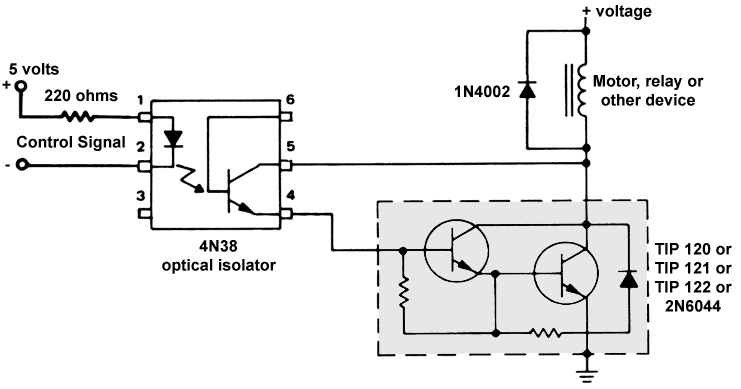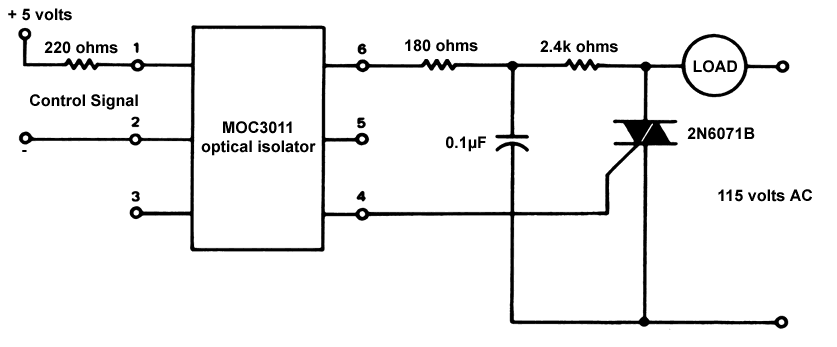
Back to Homepage - Main Project Index
To Designing and Building Sensual Androids - More Android Resources

Here are two ways of controlling power greater than the 500mA limit of the ULN2803 using low-cost optical isolators.
You'll need one of these isolators for each high-power circuit you want to control (up to 8, one for each output)
Both circuits take a 5 volt DC input from the interface through a 220 ohm resistor
(limits current to the LED in the opto-isolator).
Make sure you have the polarity correct for the LED in the opto-isolator
The first circuit controls DC power using a 2N6044 Darlington transistor (80 volt, 8 amp).
You can use a TIP120 (60 volts, 5 amp) Darlington transistor instead if you wish.
A relay is shown but a motor or other DC powered device can be used instead.
Use a heat sink on the transistor as necessary.

The circuit below controls HIGH-VOLTAGE (117 volts) AC (alternating current) power with a triac.
It can take either an inductive or resistive load.
Make sure
you construct this circuit in a grounded metal case and fuse it properly!
If you build this circuit I'll assume you know what you're doing and you won't fry yourself!
